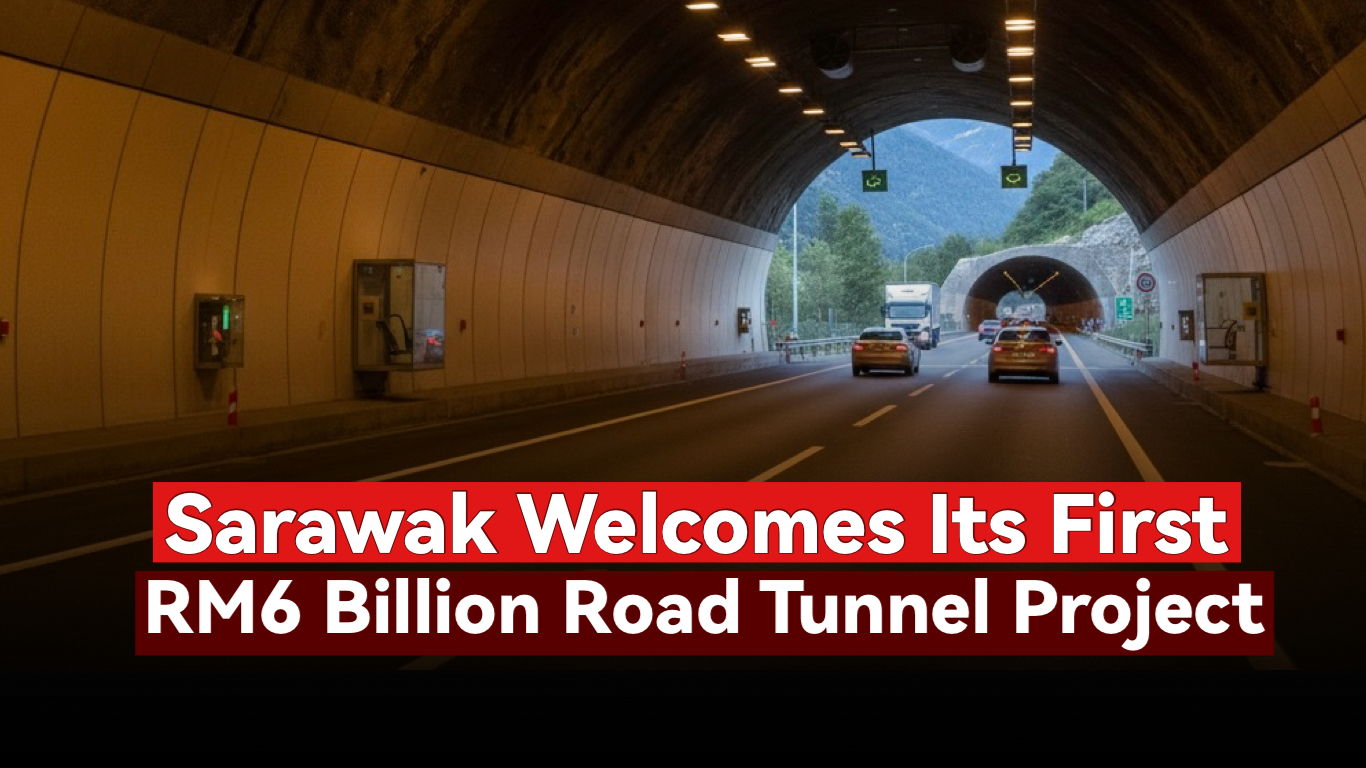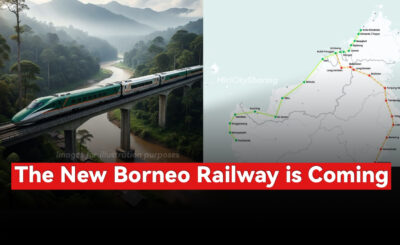A Milestone in the State’s Transportation History
Sarawak is set to achieve a historic milestone with the construction of its first-ever road tunnel, marking a new era in Borneo’s infrastructure development. The project represents a significant step toward modernizing East Malaysia’s transport network and improving connectivity between Sarawak and Sabah.

⸻
Project Overview
According to recent media reports, the tunnel will be built as part of the Sarawak–Sabah Link Road (SSLR) — a large-scale federal infrastructure project designed to link the two Bornean states via an inland highway network.
• Estimated Cost: Around RM6 billion
• Location: Planned near the Limbang highlands area
• Purpose: To cut through mountainous terrain and reduce the need for large-scale hill cutting
• Travel Distance Reduction: The current 14–20 km route will be shortened to approximately 7 km once the tunnel is completed
• Design: Single-lane configuration (not dual carriageway)
• Technology: Construction will utilize Chinese tunnel engineering expertise to ensure safety and efficiency
• Development Phases: The tunnel is part of the SSLR’s Phase 1 and Phase 2 works
While detailed specifications such as tunnel length and exact coordinates have not yet been disclosed, the project has already been hailed as a landmark achievement for Sarawak.
⸻
Background and Motivation
1. Challenging Terrain
Much of Sarawak’s northern region consists of rugged hills and dense forests. Traditional road construction would require massive land clearing and winding routes, driving up costs and causing environmental impact. The tunnel solution offers a more sustainable and direct alternative.
2. Improved Connectivity
By reducing travel distance and time, the tunnel will greatly enhance accessibility between Limbang and Lawas, as well as the broader Sarawak–Sabah corridor.
3. Strengthening East Malaysia’s Integration
The Sarawak–Sabah Link Road is part of Malaysia’s broader effort to unify East Malaysia’s infrastructure, reducing dependence on Brunei’s transit routes and improving domestic logistics, tourism, and trade.
4. Modernization and Sustainability
The use of tunnel infrastructure reflects Sarawak’s transition toward more advanced, environmentally responsible construction practices, avoiding unnecessary hill cutting and deforestation.
⸻
Challenges and Considerations
Despite its benefits, the project faces several engineering and administrative challenges:
• Budget Control: At RM6 billion, cost management will be critical to prevent overruns due to geological complexities or delays.
• Geological Risks: The area’s terrain may involve underground water systems, rock instability, and potential landslides.
• Construction Safety and Standards: While Chinese tunneling technology is proven, it must comply with Malaysia’s safety and quality standards.
• Traffic Capacity: The current single-lane design might limit future traffic growth; planners may need to consider possible expansion.
• Community and Environmental Impact: Land acquisition and ecological effects must be carefully managed with fair compensation and sustainable practices.
• Maintenance Costs: After completion, the tunnel will require continuous maintenance—ventilation, drainage, lighting, and monitoring—to ensure long-term safety.
⸻
Significance and Future Outlook
Once completed, Sarawak’s first road tunnel will bring profound benefits to the state and the wider region:
• Enhanced Mobility: Reduced travel time and smoother connections between Sarawak and Sabah.
• Economic Growth: Improved logistics and tourism opportunities along the SSLR corridor.
• Regional Equality: Strengthened infrastructure in East Malaysia helps narrow the development gap with Peninsular Malaysia.
• Symbol of Progress: The tunnel showcases Sarawak’s growing engineering capabilities and modernization efforts.
• Catalyst for Future Development: It may inspire more advanced projects — such as additional tunnels, new bridges, and highway extensions — across the state.
⸻
Conclusion
Sarawak’s first road tunnel is more than just an engineering feat — it represents a transformative chapter in the state’s development story. Once operational, it will not only reshape transportation across northern Sarawak but also strengthen the bond between Malaysia’s two Bornean states, paving the way for a more connected, modern, and sustainable future.





